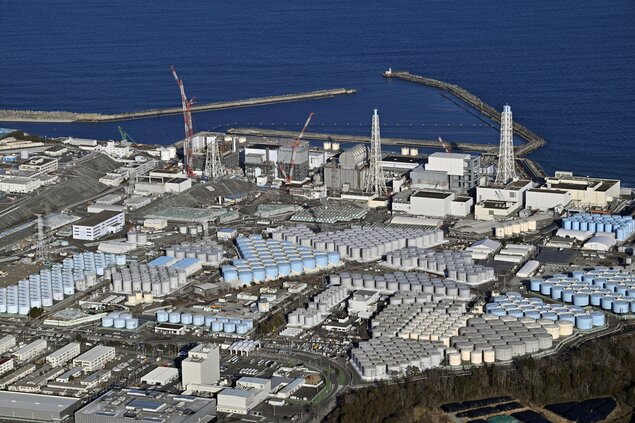TOKYO – The release of treated radioactive wastewater from the crippled Fukushima nuclear plant into the sea has entered its third year, with the operator completing the 14th round on Monday.
Tokyo Electric Power Company Holdings Inc. said about 7,900 tons of water were released into the Pacific Ocean in the latest round starting Aug. 7. Around 110,000 tons have been discharged in total, with no abnormal tritium levels detected in nearby waters.
During the latest release, TEPCO detected 61 becquerels of tritium per liter in sampled seawater, well below its 700-becquerel threshold for halting discharges and far under the World Health Organization’s 10,000-becquerel limit for drinking water.

File photo taken on Feb. 15, 2025, shows the Fukushima Daiichi nuclear power plant in Fukushima Prefecture, northeastern Japan. (Kyodo)
In the fiscal year through next March, about 54,600 tons are slated for release in seven rounds. The latest was the third since April.
China lifted a blanket ban on Japanese seafood imports in June after it found no abnormalities in seawater and marine life samples it collected independently.
But with products from 10 prefectures, including Fukushima and Tokyo, still banned, Japan is seeking the early removal of the remaining restrictions.
Following the 2011 nuclear crisis triggered by a massive earthquake and tsunami, around 70 tons of radioactive wastewater is produced each day at the plant after cooling melted reactor fuel.
The wastewater is stored in tanks following treatment by a liquid processing system that removes most radionuclides except tritium.
Japan decided in April 2021 to release the processed water to dismantle storage tanks and make room for a facility to remove melted fuel debris. The discharge began on Aug. 24, 2023, and is slated to be completed by 2051.
The processed water is diluted with seawater to one-40th of the concentration permitted under Japanese safety standards before being released.


AloJapan.com